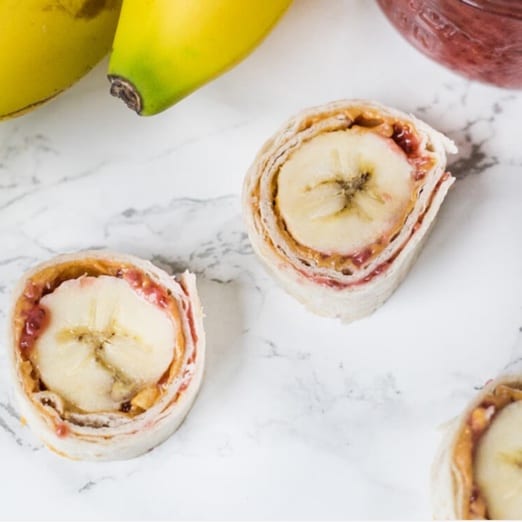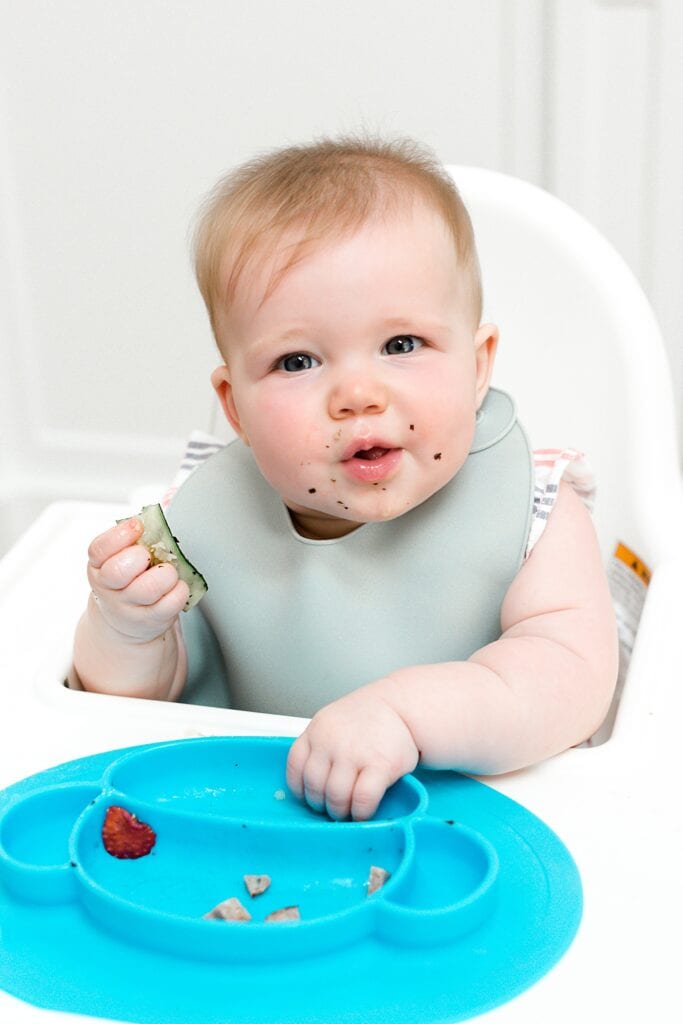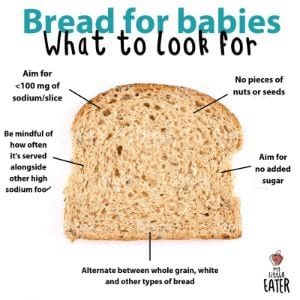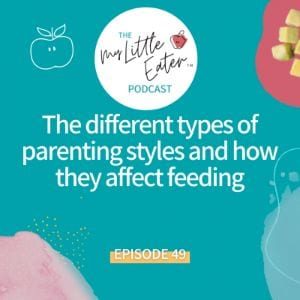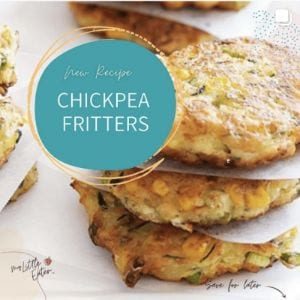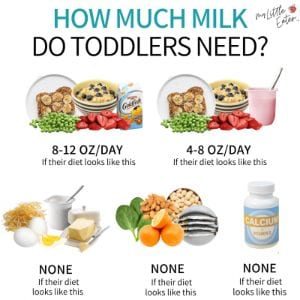
Being a mom is hard work – I don’t think anyone can disagree with me on that – but being a mom to twins or multiples…well, let’s just say I don’t know how they do it! I am in awe of how they manage two babies at once, and I had the privilege of speaking with two moms of twins recently to chat about their journey with starting solids with their twins, and to get any tips they could share for new moms of twins too. And to be honest – I’m just in awe! They had amazing tips to share, great insight, and seemed so calm and confident about the whole process – it was fantastic!
To listen to those interviews, download the episode here. I’ll be sharing the top tips they provided below as well. And we also had a third mom write in with her experience, which I’ve also included both in the interview and below.
Please note that even if you are not a mom to twins or multiples, you can and will benefit from the tips they shared with me. Their insights and experience can definitely be applied by parents of singletons as well, and I truly think that it will help take some of the stress out of starting solids and feeding your littles in general!
Meet the First Twin Mom: Victoria
So first up is Victoria who talks us through her experience with breastfeeding twins, trying to get them on the same schedule, and then also preparing them for solids with two very different babies on hand who were ready for solids at different times.
First, a little about Victoria and her family. She recently relocated back to Nova Scotia. She’s from Nova Scotia, but was living in Alberta with her husband and three kids. She has a four year old daughter and two 19 month old twin boys. And her huge 150 pound dog who was her first baby. She’s an Occupational Therapist, and is about to head back to work after a very, very long hiatus.
The main focus of what we want to talk about today is solids, but I was curious to know how her journey was in terms of breastfeeding her twins, so she shared about that first.
Victoria had nursed her daughter, but it was not a great experience. She did it for four months full time. She was determined that she was going to nurse, you know, do all the things that we want to do. And so then this time around, she thought she was going to have a toddler who would be doing whatever, and she would know what to expect with the baby because she now knows that feeding is hard. And then she got thrown twins and thought her whole plan was out the window. At first she was doing one at a time, and then there was a lactation consultant in the hospital that she was at that taught her how to tandem nurse, which was really the only way to go after that. Because she was trying to keep them on the same schedule, she needed them to eat at the same time.
She joked that it sounded a lot easier than it was, and I had to say that no, it did not sound easy at all! I never had anyone in my family, or close friends, that have had twins that I’ve been able to witness how that whole experience goes. And it’s mind boggling to me. Even as I was doing research, thinking of what questions I wanted to ask, I thought: “Everything!”. It’s exhausting enough with one kid trying to figure out when you’re going to go pee and when you’re going to shower and when you’re going to eat and when you’re going to sleep, and then it’s like times two, how do you do it? Can you even get them on the same schedule? It does not seem like it’d be an easy thing.
She explained that initially, because of sugars and jaundice, they began supplementing from the beginning to help them to be pooping which was needed to treat those things, and ensure they were getting enough milk. And so they carried on with that throughout because she didn’t want to have that stress on herself. And she explains that she was just getting to know them and she always thought they were hungry, which was confusing because they just always seemed so hungry, but knowing who they are now, she says they just really are always hungry. She describes that people were telling her she was feeding them too much, which was difficult because they were showing that they were hungry. And she also added that the surprise of them being boys played a part too, because in hindsight, her older daughter was a breeze. So with two boys she didn’t know what to expect, but it’s been the complete opposite…times two.
I just love her story, and so I really wanted to dive into how starting solids was like with them. I wanted to know if she was nervous to start solids, or what specifically were her feelings.
Starting Solids with Twins
Victoria had taken my toddler course for her daughter. Her husband and her decided to do that because they knew they would be preoccupied with the babies, and with someone else looking after their daughter, they wanted to have really consistent rules and things to follow for that person. She described having an upbringing where you had to clean your plate, you needed to eat all the food before you were allowed something else, and they decided they didn’t want that for their kids. So they took the Feeding Toddlers course to be on the same page with each other and so that they can be consistent for whoever was going to be watching their daughter. They thought it was great, and felt very comfortable with the concepts, and so knowing how they felt about that, they knew they had to grab the baby course too!
They took the Baby Led Feeding course right around when the boys were born, so they were still little newborns. They were able to do the course here and there, watch the videos together, etc. She says that she did feel comfortable, and both her and her husband have their CPR so she said that definitely played a factor as well. However, where she didn’t feel comfortable was with the fact that they just weren’t ready right at 6 months. Both of them weren’t sitting upright, they could, but it wasn’t the greatest, one of them still had their tongue thrust reflex, so she decided to just wait and think about it. She says she knew they would get there eventually. Her best advice is to just not focus on the age, because that’s what so many people focus on, or they see that this person’s doing it and so maybe they feel that pressure. She used the client support group to make sure she wasn’t missing anything. But really, they were born almost a month early, and so they were, as she describes it, just a little behind, and she says that that has been true with their motor skills too.
And I absolutely agree, if you’re wondering about that, you do always want to go by that adjusted age when it comes to readiness. So of course, you need to look for those developmental signs of readiness, you need to watch them and see what they can actually do, but often that will come with their adjusted age if they were born prematurely. Usually they say those signs come around six months, give or take a few weeks, for healthy term babies. If your baby was born prematurely, even by a couple of weeks, you generally want to add that time as a guide for when they’ll be ready, but again that is in addition to looking for the signs. So that’s very normal.
Next, I wanted to know whether once they were ready, was it around the same time, or did one show those signs before the other?
She describes it as one seeming more interested when they were eating, and the other she describes as a very oral baby. So as long as he had something to put in his mouth, he was good. She says he’s still very oral, it doesn’t matter whether it’s food or anything, he could be distracted for a long time just by having something in his mouth. So he did like solids, but he definitely wasn’t as interested. She describes too that she thinks him being more distracted actually impeded some of his other physical milestones. They lovingly referred to him as a potato because he really had no desire to roll, he would just lay there for a long time, for far longer than any other baby she’d seen. They were very patient though, and just reminded themselves that it will come, one day he will and they’re going to wish for him to be that potato again! So their starting solids journey was very different for each baby, because really they had different interests. For their baby that was very oral, he seemed to take to it right away and knew he wanted that food in his mouth and he wanted to eat. But actually, their other baby who was initially showing more interest, ended up spitting almost everything out.
Victoria also describes that she decided to do a bit of a mixed approach. And for her, that was really because she still saw them as so fragile, even though they really weren’t. She thinks this comes from seeing them when they were first born, and they were so little, one of them was 4 pounds. So compared to her experience with her daughter where she didn’t have a lot of nerves, she found that she did with the boys. So she decided to do more of a mix where she started off with purees to see how they did, and then when they did pretty good, she moved onto finger foods, like strips of foods such as fruit, or a whole strawberry. She knew it was really for giving them exposure as they didn’t catch on right away. But she wanted them to have that experience, and to touch the food, try to pick it up, and bring it to their mouth.
However, the way that they grasped the food impacted what she offered as well. She says that for one of the boys their pincer grasp didn’t come for a long time, which really affected what she could serve them. He always had to have strips, and actually still does because it was only in the past couple months that he developed his pincer grasp. She knows this was very late, and as an Occupational Therapist she tried not to focus on it too much, and she describes it as he probably just had weak hands, but it did affect what she could really serve both of them because she had to keep that in mind.
I love that with her experience with her daughter previously, and her education, she was able to recognize that these things would come in time, even though I know it was probably still worrisome. The main takeaway from this is just how different every child can be – even twins! Every baby comes into things in their own time, and you have to adjust, and again, all the guidelines and timelines that we give are really just guides.
I had another mom that wrote in to describe her experience with starting solids with her twins, and what’s interesting is that she actually started with purees for both of them until about nine months of age because her babies had really bad reflux, and that’s just what worked best for them. And then she moved on to finger foods, but she also says, and I quote, “When we first started purees, we would feed once a day in the morning, between the morning and the mid-morning feed. And it was important for me to keep them on the same schedule, to maintain some sort of sanity and structure. Now we eat three meals a day plus four bottles, and we will be working in snacks.” She also says, “Honestly, I did not make their food. I bought store-bought food. Now I make food for them, whenever I can fit it in. Usually it’s during naps, and clean up is always a time consuming one.” I really appreciate that this mom actually told us, and shared her experience, that she had to buy some store-bought food, and that’s just what worked for them. Her sanity was important, and that’s what they needed to get some structure in their lives. There should be absolutely no guilt around this.
And listen, I really just want you at the end of the day, to be enjoying this experience, and making this experience joyful for your baby or babies. If you know me, you know that that is my main focus, it’s not about being perfect. Those nitty gritty details where, yes, it would sometimes be nice if we could do that, or would it be considered best practice, yes. However, if you’re enjoying this time, and if your sanity is there, and you’re showing up with intention, and you’re showing up happily, and your baby is doing that too, then that’s going to be what’s going to get them to love mealtime. And that’s going to be the biggest difference in your child’s love for food, and love for mealtimes, and ability to actually grow into a healthy eater that is adventurous and that wants to be at the table.
This mom also says, “Although they’re identical, they couldn’t be more different. They both went at their own pace, and it’s best to just treat them as individuals and not expect them to be at the same place, or stage, the whole way. Take it day by day, and try not to compare your kids to other singletons. Multiples are often born early and don’t always hit milestones at the same pace as full-term babies, mine had really bad reflux, and this made everything challenging and put us a little bit behind the ‘normal curve’. But today they are doing great and caught right up as far as their skills.” Again, this insight is just so helpful, and our next twin mom shares more about this as well.
Meet the Second Twin Mom: Jill
Jill talks about how she navigates two different styles of eaters, and also provides some amazing meal prep tips for when they were babies, and then now as toddlers.
She started solids with oats mixed with breastmilk. And then from there, I was curious to know how they progressed, whether it was generally the same, or did one show interest in finger foods before the other, was one pickier, etc.
She found at the beginning that they were similar, but now at around the one year mark, she has two very different types of eaters. They started off with things like avocado or scrambled eggs or bananas. She would also do a lot of toast fingers, things like that. And they kind of just let them go. She also only offered breakfast for about the first two months. It was the easiest meal for them to do, and clean up. And then they did breakfast and supper, and then obviously now it’s breakfast, lunch, and dinner.
Jill found at the beginning they kind of progressed together, but now she has one boy that is very fast and furious (something that carries into all aspects of his personality). If he’s hungry, he wants to eat, he wants instant satisfaction to not be hungry anymore. And then when he’s done, he throws this food everywhere and he wants out. And then their other little guy takes a little bit to warm up when he’s eating. He likes lots of options, he kind of picks one thing and he smells it. She describes him as being very sensory, and says he takes about 15 minutes longer to eat. She usually is cleaning up around him, and he’s still in his high chair looking at things, but at the same time, he still eats a ton. She would just describe him as a slow eater, he likes to examine his food, and take a moment to decide what he’s going to eat first.
Tips for Balancing Meals with Two Different Styles of Eaters
Jill finds this difference between her boys to be a bit tricky sometimes. Her boy that likes to eat a lot at once and then is done can get upset if he doesn’t want what’s on his plate at that moment, he will sometimes, as she says, lose his mind (I think we’ve all experienced this with babies and toddlers before!).
Now, her husband is a chef, so he’s quite passionate about healthy eating, especially for kids. He also gets the girls involved in the kitchen, which is now translating to their older girls helping out their brothers. But right now she’s dealing with the reality of having two styles of eaters. She doesn’t want her one boy to be hungry if he’s upset with the food being offered, but she also doesn’t want to be making a special meal for him over his brother. How she handles this is by sitting her boy who likes to take his time down at the table first. She’ll get him in his highchair, get him settled with some food on his tray, and then she’ll get her other boy in his chair and offer him his food. She usually likes to offer him the things that he likes best first, because once he gets that hunger out of his system, then he’s more willing to eat other things. But if it’s something that he can’t pick up, he just gets frustrated, and really wants to move on really quickly. She describes this part as being the trickiest part of their feeding journey – trying to keep them both fed at the same time, with the same foods, when they both have very different styles of eating.
I love how she describes how she adjusts to their different personalities – this is amazing! For all moms and dads out there that are maybe getting ready to start solids with twins, or just found out that they’re pregnant with twins, or multiples, learning how to deal with this variation in eating styles is so important. Finding the balance of how to feed one child that likes to eat fast over one that’s slower, maybe one likes the high chair and the other doesn’t, or something like that. Trying to keep everyone fed, without catering to each, or drawing too much attention to one over the other – that’s definitely tricky! I think for Jill, one of her advantages is her experience. She has four kids and so she kind of has an idea of what it’s like to feed multiple children (not the same age mind you), but the idea of them all being at the table and balancing their different personalities, while multitasking and managing these kids – it’s hard work. So I wanted to know what other tips she had to share with parents who have to manage multiple kids at mealtimes.
Managing Multiple Kids at Mealtimes
Jill’s husband is a chef and is all about, what she would describe as, rustic cooking, and he loves to use real ingredients. He makes food for the kids, watching salt and sugar, etc. However, she also says, just don’t overthink it. Don’t stress that every night there needs to be a recipe, and a meal. When he’s at work sometimes, and she has to cook for them, she’s picked the girls up from school, and then has to feed all four, do baths, and bedtime by herself. Sometimes their dinner is something like a scrambled egg wrap with avocado and some fruit on the side. She doesn’t stress that every meal has to be a perfectly put together meal. She offers different food groups, they have nutrition, they aren’t starving, they’ve got something to keep those blood sugars regulated, so she doesn’t stress about it every night if it’s not a perfect meal. Sometimes her girls get home from daycare especially, because they eat really well there, and they aren’t starving when they get home, so she puts out a plate of veggies and hummus. They sit there and chat and dip veggies, because they want something to eat but aren’t starving. So she finds by doing that, it makes their evenings probably a little bit easier. She’s offered them food, they’re not going to be hungry, they’ve had some sort of nutrition, and then also she’s not spending however long making a stir fry or whatever, because they have lots of nights where that happens as well. Particularly when her husband’s home, and they’re all just home earlier, they’ll do that. But when it’s just her with the four kids, her best advice is to not overthink it, and don’t stress about it.
She goes on to say that that is her biggest piece of advice with twins in general – don’t overthink and don’t stress. She has two boys who were raised in the same household, they’ve been with her 24 hours a day for the past 13 months, and their personalities are night and day. So obviously you’ll be teaching your kids right from wrong, you’re going to teach them the value of healthy foods and treats, and everything like that. But when it comes to their personality, a lot of that is just they are who they are. So don’t beat yourself up if someone’s not eating it at this point in time, or it seems like you’re going through a weird stage, or anything like that. Stay calm, don’t overthink it, and just go with the flow. When you’re in those sweet spots where everything’s going well, she says “Make hay while the sun shines!”. But if you’re in a tough spot with any kids, at any age, just find a way to get through it and then pick up and keep going once you get out of that stage.
I absolutely love that advice! Millennial parents in this day and age, with tons of info on the internet, and research changing every month it seems, we could easily drive ourselves crazy with questions like, “Are we doing this perfectly? Is this right? Is this a perfectly balanced meal? Do they eat enough? Did I say the right thing? Did I do this on time?” All of these things that are going through our heads can drive us crazy. You put the most important things first, and that’s what really matters.
Sometimes when you do have one child, it’s your first one, and you feel this pressure to have everything right. You may even have a bit more time, not endless amounts of it because none of us have that much time, but you may have more than somebody with multiples, or somebody who’s had their second, third, fourth child. And so to realize that you need to focus on those things that are going to move things forward, that are most important, and that will truly affect their life in the long-run, versus the minute details that, at the end of the day, no one will be able to tell the difference between one baby who’s had that and another who hasn’t, the ability to do that is really crucial.
Do Twins Really Need Double of Everything?
I honestly just assume that parents of twins have to stock up on everything like crazy, but maybe not? I assume highchairs, yes definitely need two of those, but what about plates, utensils, etc.? Jill actually really kept things simple, besides two highchairs, and tons of bibs, they haven’t purchased a lot for feeding. She says that her boys are still mostly eating off their trays right now. And for her girls, they have the Ikea sets of plates and bowls and cutlery, so that’s basically it.
For highchairs, Jill uses the very simple Ikea high chairs that I recommend in my blog on choosing the best high chair. She also shares a really amazing tip for parents of twins – face their high chairs together as a “table for two”! She says that her boys spend all their time together anyways, so this way they can watch each other eat, and babble to each other while they’re doing it. Because a lot of times, no matter how much they try to sit down together to eat, it’s not always possible with activities going on, for them as a family of 6 to share every meal together and have life-changing conversations. Life is busy sometimes! Sometimes her girls are hungrier earlier or later, and so they sit to eat at the breakfast bar in their kitchen and she puts the boys beside them, facing each other, in their high chairs. For her, this is really helpful. Her one caution though is that now that they’re older they’ve started putting food that they don’t want/like on the other’s highchair tray! So, maybe have them face each other with just a little bit of space between.
This is a great tip that I never would have thought of, since I’ve never been through that experience. I love that they can be with each other all the time, they have a built-in best friend, they can learn from each other this way, and have company. It’s really such a blessing!
Meal Prep Tips from a Twin Mom
When parents have more than one child, or are going back to work, and they’re very busy, meal prep can certainly be beneficial for making those really hectic days a bit simpler. Jill and her husband do a lot of meal prep, but not necessarily specific meals. For instance, her husband will make a huge batch of rice, and then they freeze it in individual servings. Or he’ll take turnip and carrots and he’ll roast them, then freeze those in individual servings. He does the same thing with lasagna. So if they ever have a night where they’re tight on time, they can pull something out and warm it up in the microwave. She says they’re basically like freezer meals, but it’s really more ingredients than actual meals. So maybe they have chicken and nothing else, but at least they have that cooked and it saves them a ton of time.
And I can certainly imagine that for families where maybe their babies aren’t on the same schedule, how are they getting enough time to get these things done – between naps and clean up, where are they finding the time to prep ahead? Even just something as simple as what are the kids doing while you do these things, are they helping in the kitchen? I wanted to know if Jill had any strategies for getting these things done with four kids around you, and she didn’t disappoint!
Jill says they really focus on ingredients, so her husband does a lot of prep at the beginning of the week. If he’s making a school lunch and he’s chopping up vegetables for it, then he’ll chop 4 peppers and put the extra in a container in the fridge. That way it’s easy to grab and use. So their best advice is to do things once. When you go to do something, just kind of do enough. If you’re touching something, whether that’s prep or clean up or whatever, just touch it once, get the job done while you’re doing it, and try to think ahead. Especially for kids, she finds they don’t mind if they eat the same snack three days in a row, so if you’re prepping something prep enough for future days too. Always working a little bit ahead, and having things in the freezer so you always have something available in a worst case scenario. And I couldn’t agree more, always thinking in advance, being one step ahead, being proactive instead of reactive. That mindset is really going to help make things easier in the long run.
Final Thoughts on Starting Solids with Twins/Multiples
As you can see, they all used different feeding approaches at some point in time, even though they all used a mixed approach. And so really either one, whether puree feeding or baby led weaning, can work no matter what. However, I will say that I could see how with twins, triplets, quadruplets, etc., generally speaking, offering finger food and going more the baby led weaning route, could be easier. Simply so that you don’t have to be actively feeding them all at the exact same time. Sometimes I do hear that, and again, I could totally imagine how hard it is to be spoon feeding two or more babies using two spoons and two bowls at the same time. So I imagine you’d have one spoon for baby A, one spoon for baby B, and then you’re kind of back and forth, back and forth, which can result in a lot of crying if the babies don’t like to wait long between each spoonful, and they become upset. Ideally, we want to go at their own pace and help them lead the way. But also in that situation, I honestly would say, if you’re doing the spoon feeding route, feed them from the same bowl and spoon. Don’t worry about them sharing food, or exchanging some germs, they’re siblings, so trust me, they will be sharing some germs at some point, from now until forever. So there’s really no point in avoiding it, or worrying about it, once again, your sanity is so important, so anything that will make it easier for you is a win. And honestly, they’re going to be so much happier with the logistics of the meal, and they’ll be able to eat at a good pace.
I’d also encourage you to still offer each of your kids utensils to play with and explore on their own. Now, without a doubt, cleanup is going to be way harder for you. If you have multiples like triplets, quadruplets, etc., it’s going to be way more time consuming for sure. I would love to hear from parents of multiples, as in triplets or more babies, to see how things continue to change as you have more kids involved (if this is you, send me an email at info@mylittleeater.fixed-staging.co.uk). I would imagine that you’re going to need more help from another adult at that point.
In general, a community of people is so important when raising kids, both a physical community and also a virtual one. If you have it, or if you can find one that can provide you with advice and love and encouragement and care, that’s so incredibly beneficial. We know this first-hand, and we know this is even so important with one child, let alone multiple. It requires daily support and ongoing practice to build habits as a parent and to help give your little one that ongoing experience that they need.
Some of the links on this page are affiliate links. That means, I get a small commission if you purchase through this link. However, I make it a point to only share tools and resources I truly love and use.



